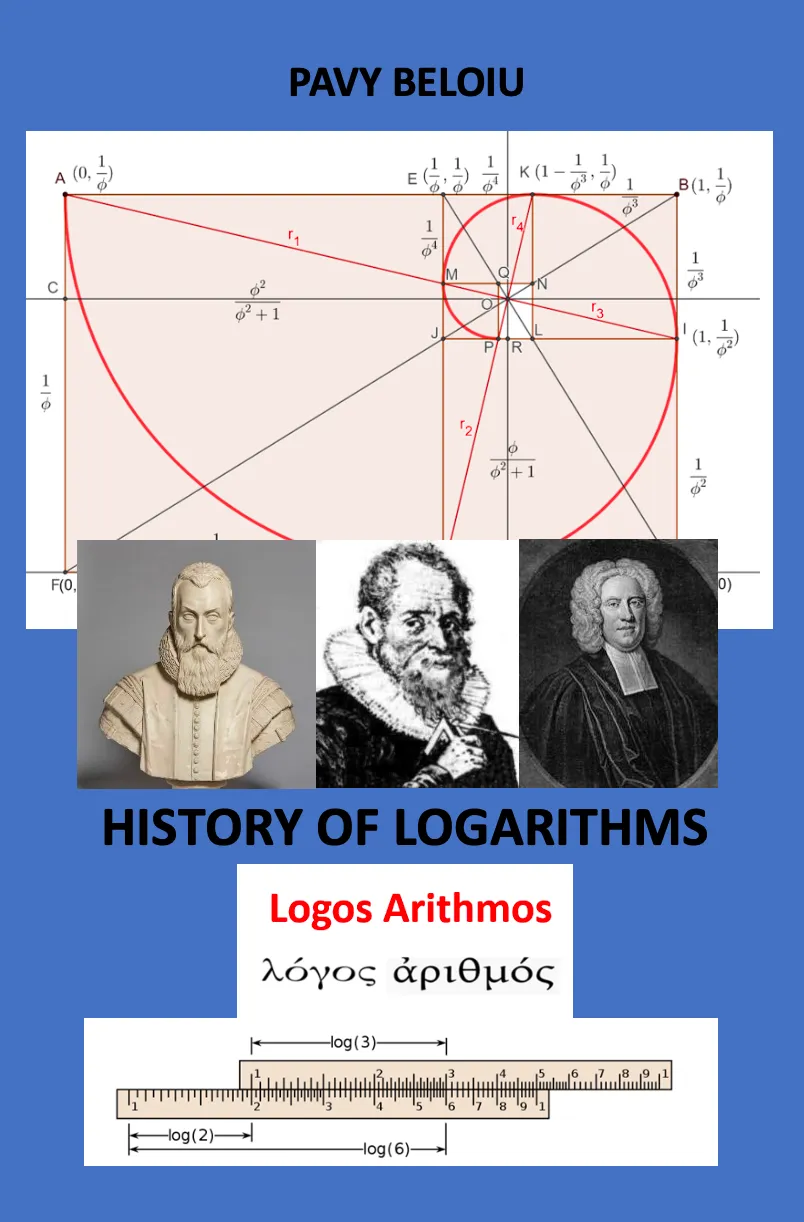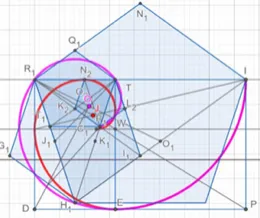📕 The History of Logarithms
Substack Article:
🎙️ Podcast Summary
If you’d rather listen than read, check out the short 14 minute podcast summary of this page generated by NotebookLM.
🎥 Video Summary
If you’d rather watch than read, check out the short 9 minute video summary of this page generated by NotebookLM.
 Vimeo History of Logarithms
Vimeo History of Logarithms
✍️ Introduction
This work is part of Beauty and Truth, a pursuit of mine for several years, ever since I began to think and dream of a more special book connected to art and mathematics. The invention of logarithms, the slide rule, and then the binary system led to progress, and calculations were simplified in all fields. These heroes of Mathematical Truth, found in the subdivisions of the ONE, were at the same time reverent and devout, and they loved the Lord. My writings, humble and modest, bring to light memories long forgotten, hidden in the dust of time and asleep in the fog of history.
Pavel (Pavy) Beloiu, native of Muscel and descendant of six generations of Moldavian priests (his father, Mihai Beloiu, was the last). Passionate about art and history, he sought to bring to light events and stories lost and unknown to today's readers. He combined engineering with painting, and later with writing and mathematics. He left for America in 2001 and still longs for his homeland and his friends back in the country.
🔍 Highlights
- The origins of logarithms and their creators: Napier, Bürgi, Briggs
- Rare insights into theological underpinnings of early mathematicians
- Historical evolution of the slide rule and logarithmic tables
- Connections between mathematics, scripture, and divine proportion
- Personal reflections on learning, childhood, and creative longing
- Original commentary on harmony, proportion, and geometric growth
- Echoes of Romanian heritage and lifelong search for meaning
📖 Book Details
- Title: The History of Logarithms
- Author: Pavy Beloiu
- Publication Date: June 22, 2025
- Pages: 111
- ISBN: 979-8289240095
- Formats: Paperback, PDF
Buy Paperback on Amazon 👉 Buy on Amazon
Download PDF Edition 👉 Buy Digital PDF
🧭 From the Foreword
“How can Beauty and Truth be united? Through this work, I attempt to answer this question by revisiting mathematical discoveries that were born in prayer, patience, and faith. The divine spark in geometry, spirals, and proportion leads not only to scientific clarity—but to wonder.”
“I discovered, too, that the longing for harmony in mathematics is the same as that in scripture. From logarithmic growth to the construction of the Tabernacle, these proportions echo the Word that became flesh.”
— Pavy Beloiu, United States, 2023
🗂️ Selected Topics
- John Napier and the theological foundations of logarithms
- Bürgi’s parallel invention and mathematical insights
- Slide rules: circular, linear, symbolic
- Logarithmic and trigonometric tables
- Hyperbolas and logarithmic curves
- The role of proportion and the number ONE
- Biblical dimensions and sacred ratios
- Reflections on forgotten pioneers and devotional intellect
👉 For the full chapter list, view the complete index below.
About the book of logarithms
I learned logarithms in school and did my first calculations with the mantissa and
characteristics, which were in the tables at the end of the algebra book. I was amazed by the
power of logarithms, which helped you, in a few minutes, to do any complicated operation, raising
to power and radicals of any order. My older brothers had slide rules and showed me how to
multiply with 7-digit numbers, in a few translations. What a miracle! I knew nothing about this
secret, kept hidden in the tables, with 10 decimal places in textbooks. Then, in integral calculus, I
saw that the base of natural logarithms is the mysterious number e, then I heard something about
Napier and the logarithms, which bear his name.
After 50 years, I asked myself the question, why did John Napier call them logarithms?
What does logos arithmos mean, or the proportion of the number? Here are some questions,
which find their answer, partially in my modest book.
Napier remained famous because his logarithms are called Napierian. Who are Bürgi and
Briggs, who came after him? Here are other answers dug up from the dust of history. The world
has forgotten them, who still studies logarithms? What is the slide rule, which took civilization to
the heights of knowledge, until pocket calculators arrived? These pious people are still behind
progress and civilization.
I have briefly reviewed the history of these mysterious small infinities, with bases around
one. I have created the tables again one by one, starting with Napier, then Bürgi and Briggs. The
divisions of ONE are fascinating and brought logarithms, trigonometric tables and later, small
infinities, fluxions, as Newton called them. Gauss went even further and defined the circle with
radius ONE in the complex plane. At 19 years old he solved the problem of constructing the
regular polygon with 19 sides, which I will present in a future book. How are logarithms hidden
in hyperbola and what is the connection between logarithms and the spiral of logarithms,
discovered by Descartes?
Everything is linked to that universal ONE, which briefly defines the universe and
especially a PERSON, which encompasses all the values of ONE: Jesus, the Son of God, the
firstborn, the only one, the unique, is present on all pages of the Bible.
As a novelty, I presented the thoughts of 2 great Romanian Christian philosophers and
thinkers, Noica and Moisescu, who discovered the secret of the pyramid of Cheops.
I think the adventure of reading is fascinating and brings to light a forgotten history, which
deserves to be known by us, those who benefit from the inventions of those mentioned above. I
conclude with the column of infinity, by Constantin Brâncuși, which goes to the sky.
🧾 INDEX
- John Napier and the history of the logarithm 6
- Theological work 15
- Napier's Kinematic Model 17
- Logarithm and progressions 21
- Napier's table 26
- Jost Bürgi 27
- Mathematical works-logarithms 33
- Bürgi's table 43
- Slide rule-circular 46
- Sine function 52
- Henry Briggs 53
- Briggs' table 58
- William Oughtred 59
- Slide rule 63
- Napier's and Bürgi's logarithms 64
- Comparison of tables 66
- Logarithmic and trigonometric table 71
- Equilateral hyperbola and logarithm 77
- Squaring the hyperbola 80
- Gregory de Saint Vincent 84
- Thoughts about logarithms 86
- Duplicating the cube 89
- Logos - logarithm and proportions 90
- ONE 94
- Constantin Noica-Mathesis 93
- Vasilică Moisescu- Universal Harmony 102
- Comments 107
- Bibliography 111






